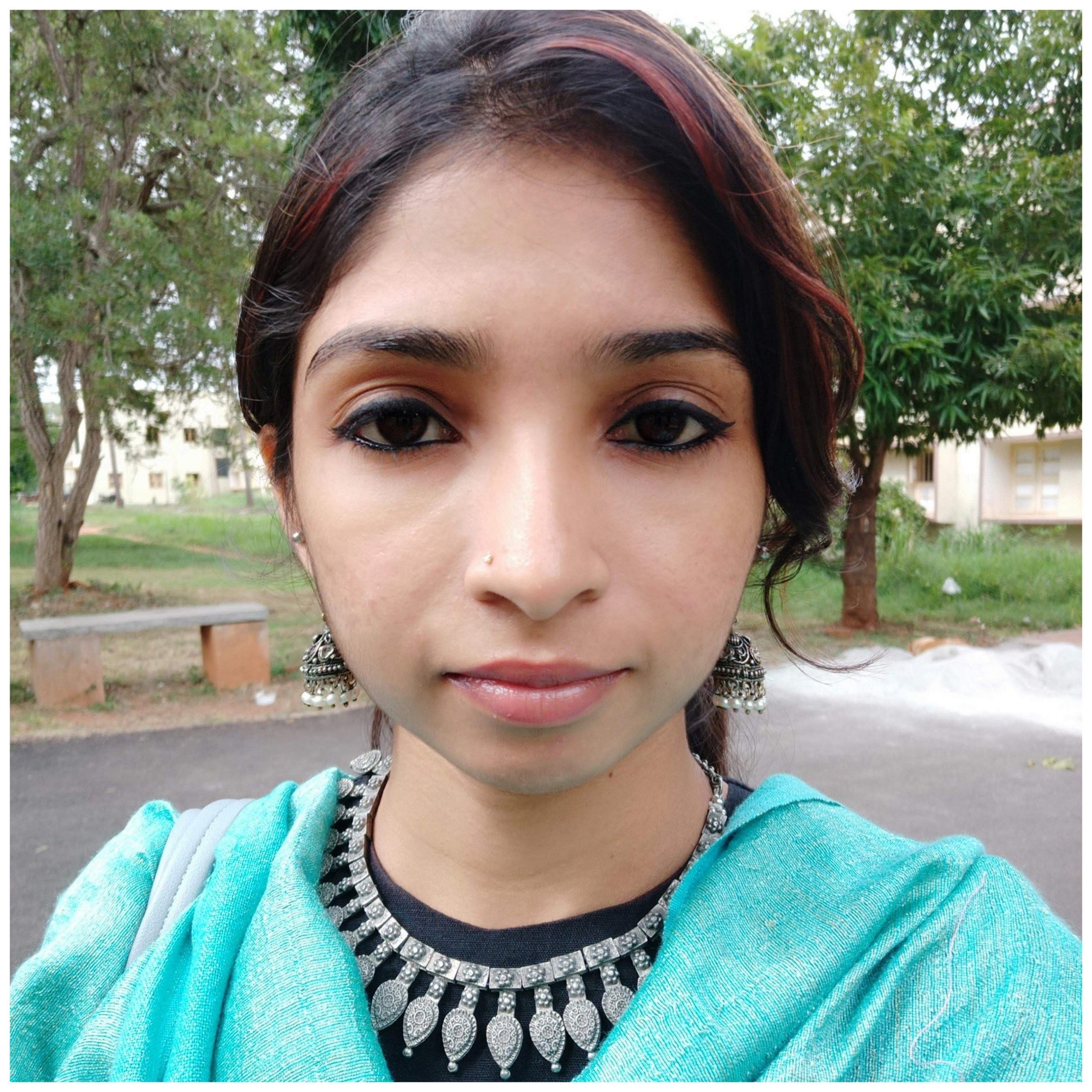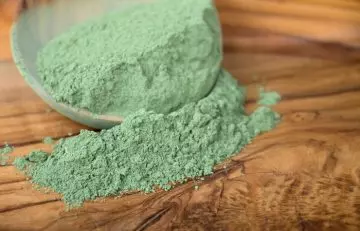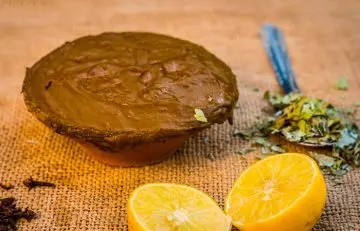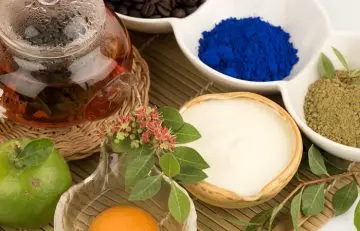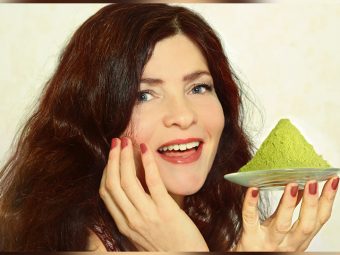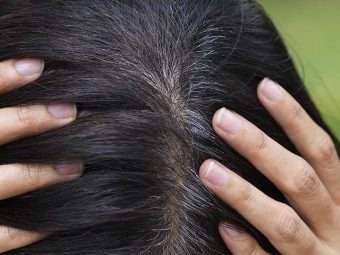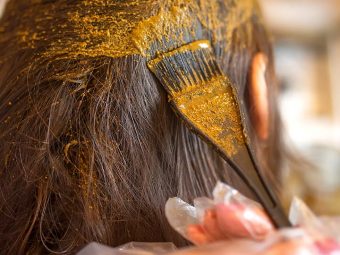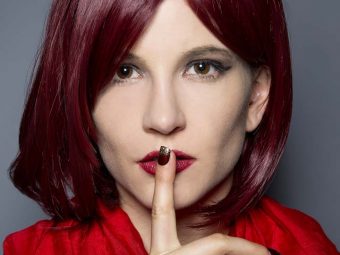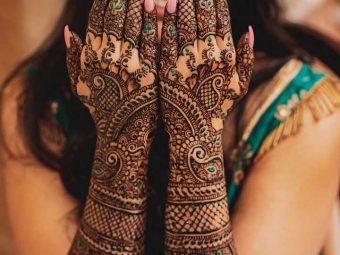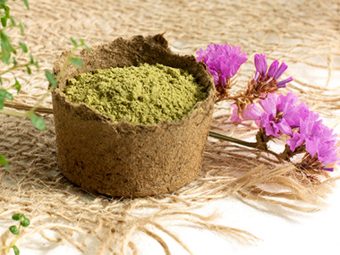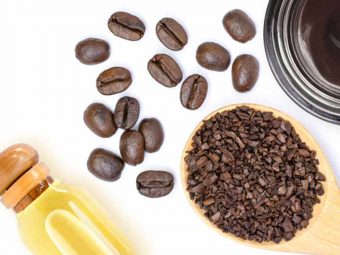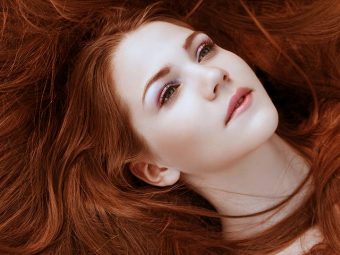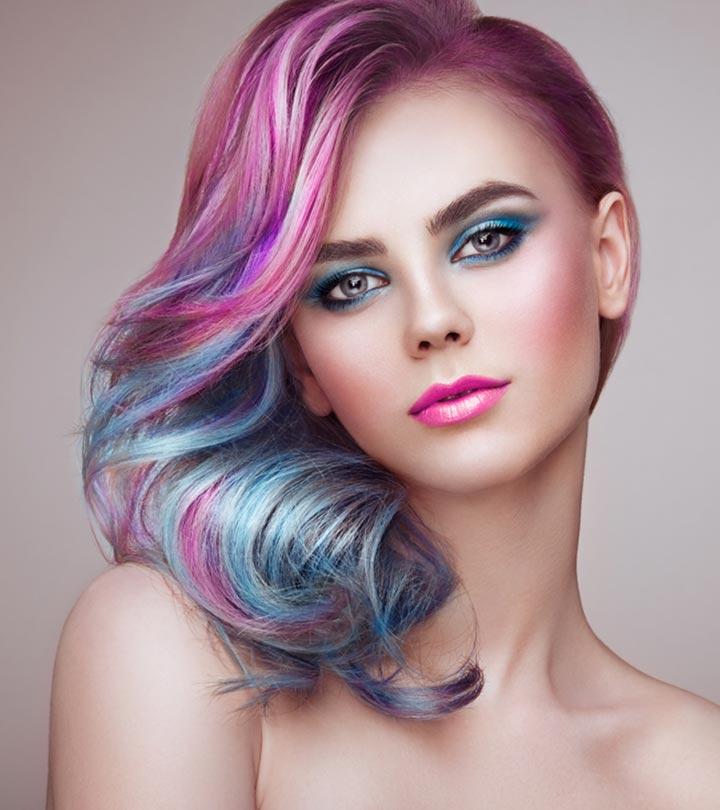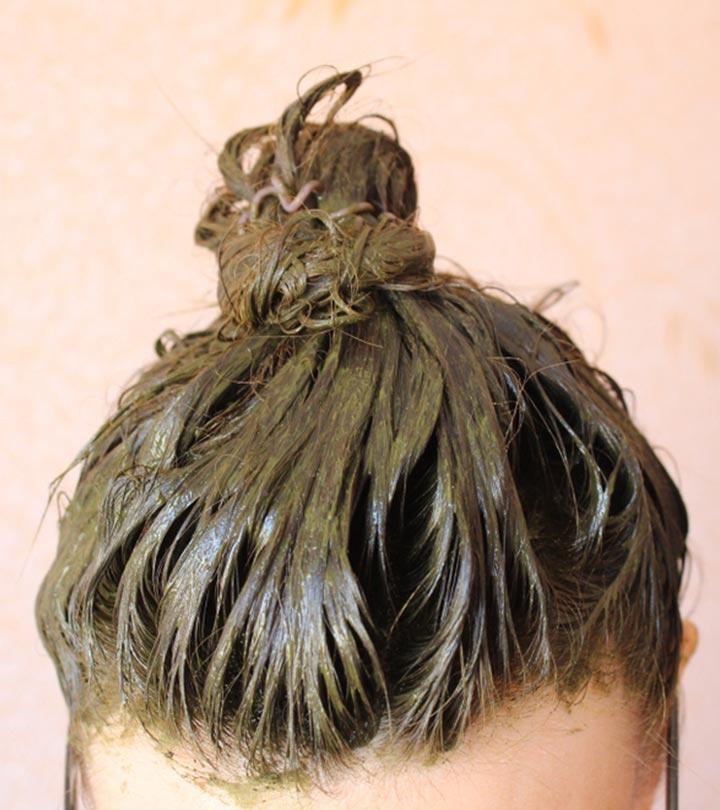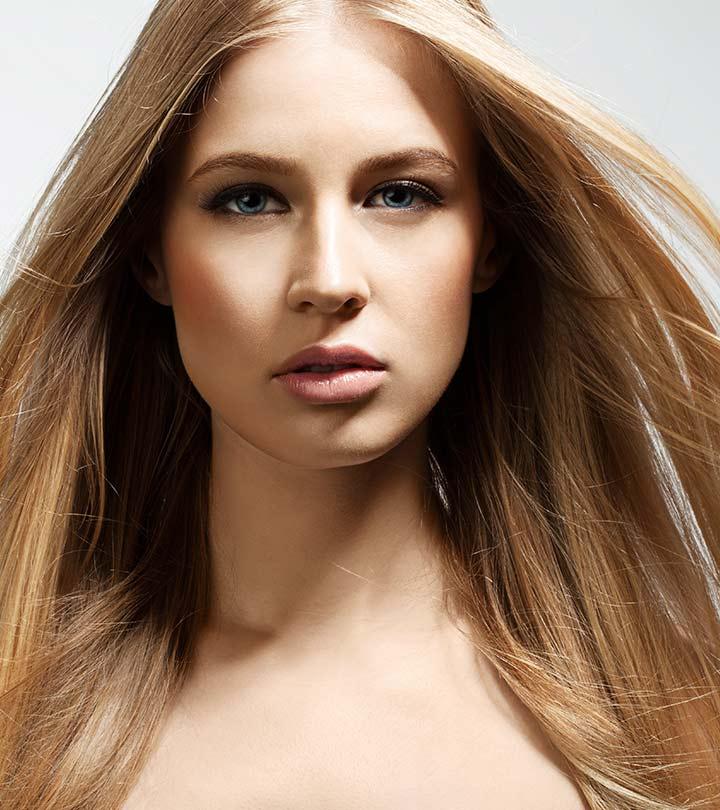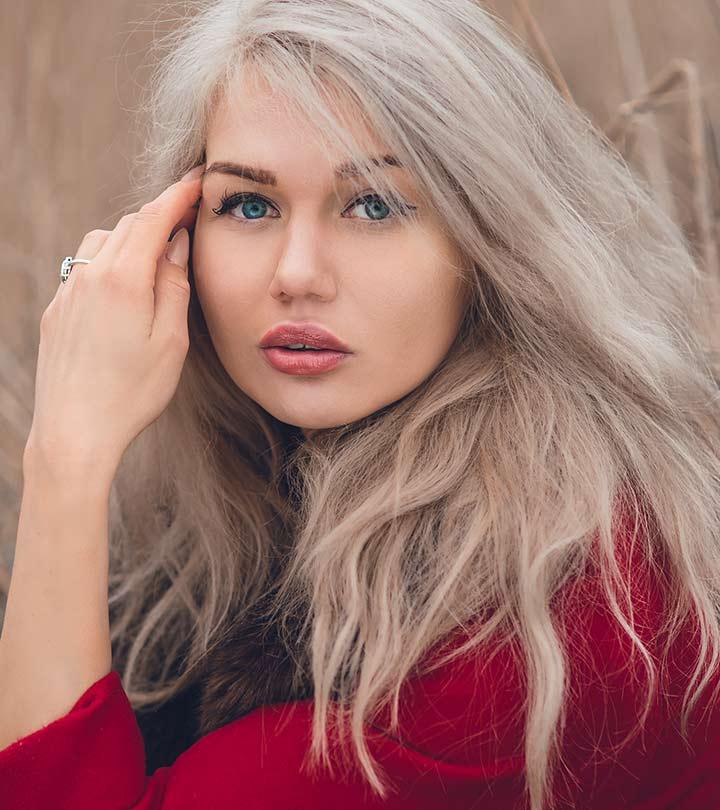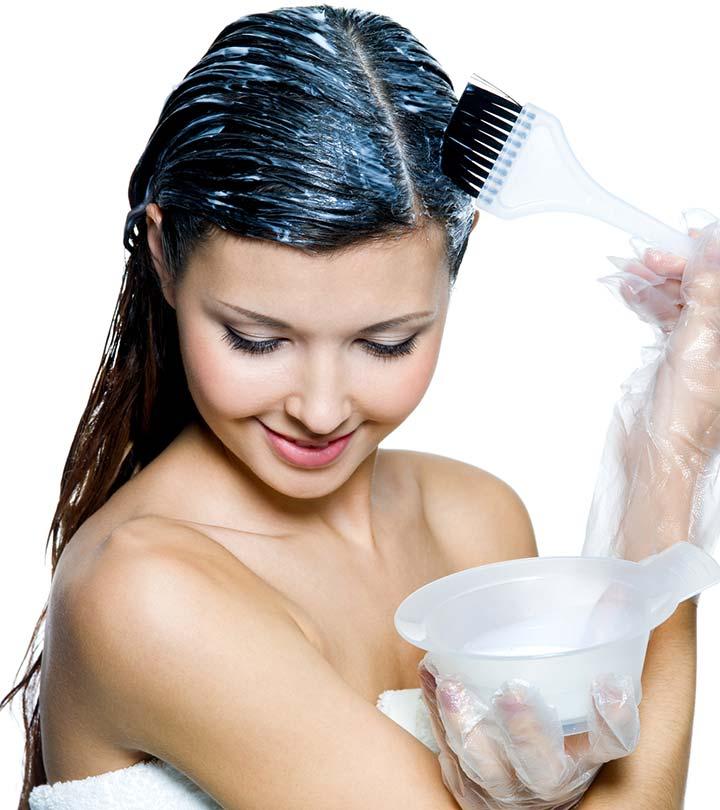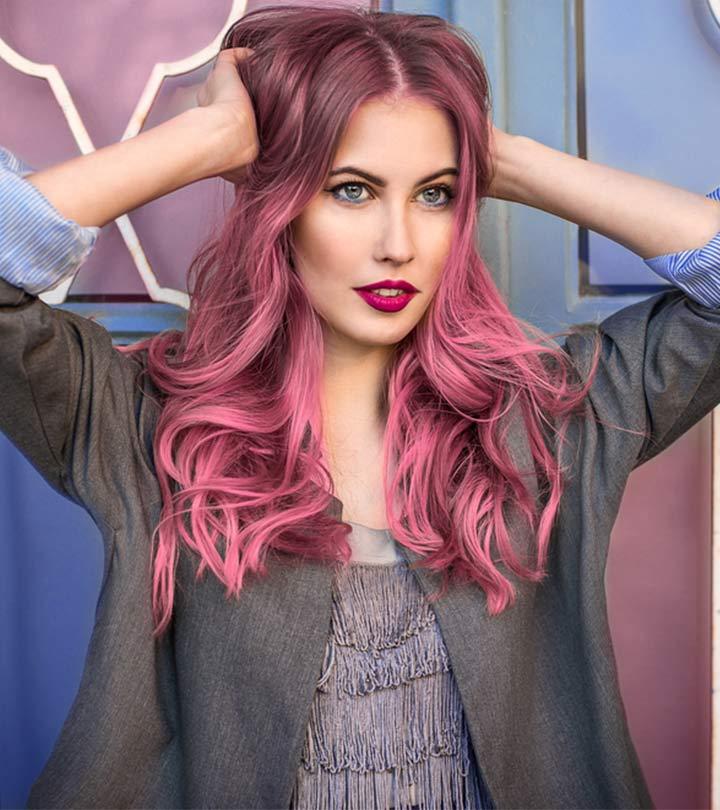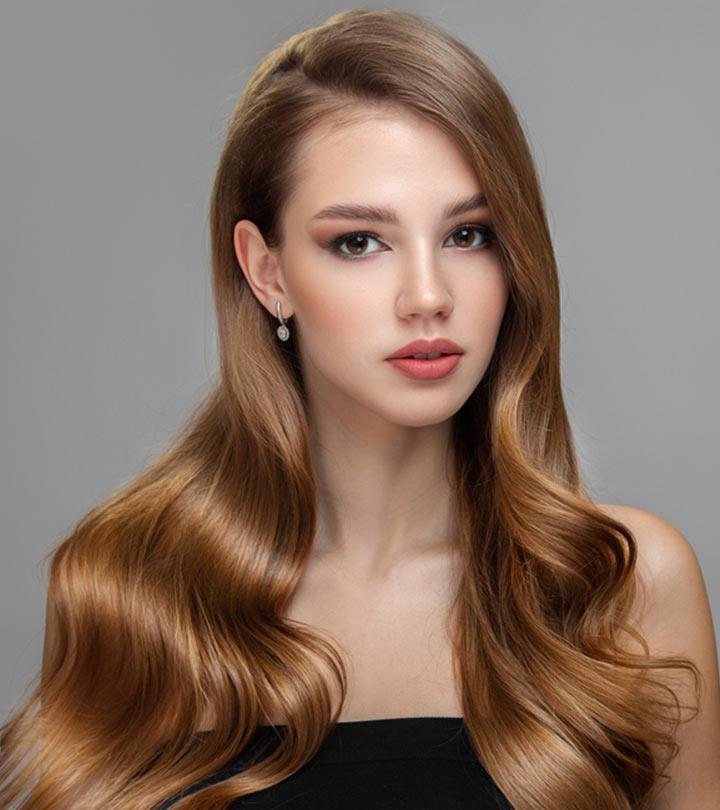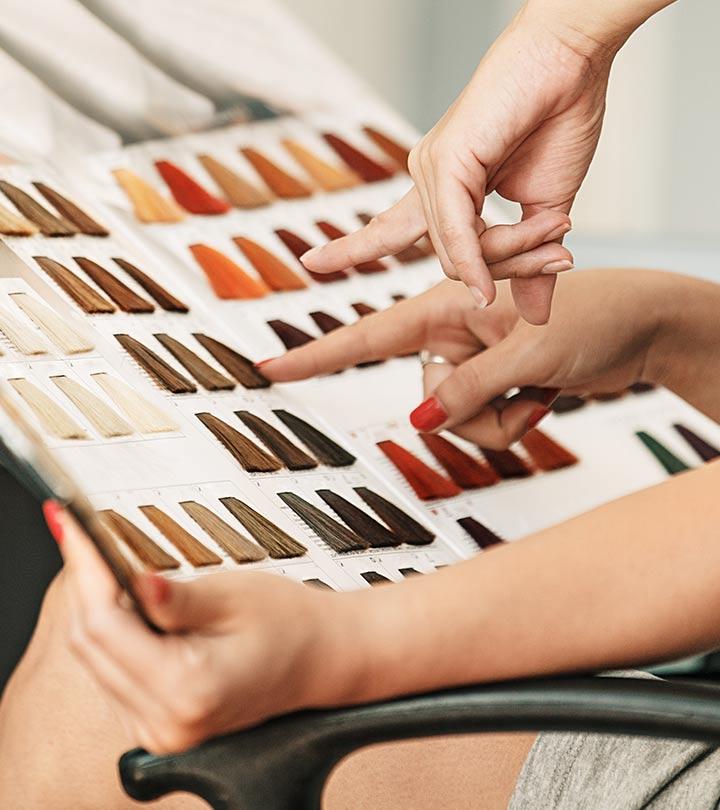How To Use Henna And Indigo To Dye Your Hair Black And Brown
All the smart tips you will ever need to darken your hair with natural ingredients.

Image: Shutterstock
Gray hair is the most visible indicator of aging. Although store-bought hair dyes are a proven safe solution to this problem, the chemicals they contain can harm the hair in the future. That is why you need to learn how to use henna and indigo to dye your hair black. Indigo and henna hair treatments are healthier and natural alternatives for getting the magnificent black tresses of your dreams. Given that henna is the most widely used organic dye in the world, you may already be familiar with it. So let’s take a look at indigo, a less well-known coloring pigment first. Keep reading!
In This Article
What Is Indigo?
Indigo is a natural plant-based dye that is obtained from the Indigofera tinctoria plant. It is a rich, dark blue and is mainly used for dyeing clothes, especially denim. It is known to be one of the oldest herbal dyes to be used for textile dyeing and printing. However, it is now also being used in combination with henna as a natural hair dye (1).
 Did You Know?
Did You Know?What Are The Advantages Of Using Indigo?

- It is an all-natural hair dye that does not harm your hair in any way.
- When mixed with henna, it gives your hair a rich brown color.
- When applied over henna treated hair, it gives a lush black color.
- Regular use of indigo on hair can treat and prevent premature graying.
- Indigo extracts were found to stimulate new hair growth in rat studies (2).
- Indigo was also found to enhance hair color and shine and provide a cooling sensation (3).
Who knew this largely obscure natural hair dye could offer such a range of benefits, right? Well, now that you do, let’s look at how henna works wonders for your hair!
Precaution: Although Indigofera tinctoria is used in many dyes, it may cause skin irritation and allergic reactions (4). Before you use it on your hair, do a patch test on your skin to check for any reaction.
[ Read: 5 Basic Steps To Apply Henna For Grey Hair ]
Henna Benefits For Hair
Henna works its magic on your hair in the following ways (5):
- Natural Coloring: Henna, by itself, imparts a rich, reddish-brown hue to your hair.
- Root Strengthening: Its application strengthens hair follicles, reducing breakage and promoting overall hair health.
- Hair Conditioning: Henna is a natural conditioner, leaving your hair soft and manageable.
- Improving Texture: It helps make your hair thicker and smoother, enhancing overall texture and adding shine.
It is finally time to find out how to use henna and indigo together to dye your hair.
How To Use Henna And Indigo To Color Your Hair Black
When it comes to dyeing your hair with henna and indigo for black hair, it’s a two-step process. You can’t simply mix the two together as that will give you brown or auburn locks. To get gorgeous black tresses, you need to first treat your hair with henna and then go in with the indigo.
What You Need
- Henna powder (100 g for short hair, 200 g for shoulder-length hair, 300 g for long hair)
- Indigo powder (100 g for short hair, 200 g for shoulder-length hair, 300 g for long hair)
- Juice of 1 lemon
- Salt (1 teaspoon)
- Cornstarch (2 teaspoons)
- Water
- Glass mixing bowl
- Big spoon
- Plastic wrap
- Hair coloring brush
- Old towel
- Shower cap
- Rubber gloves
- Sectioning clips
What To Do
 Did You Know?
Did You Know?Step 1: Applying Henna And Indigo Mix For Black Hair
- Combine the henna powder and lemon juice in a mixing bowl.
- Slowly start adding water and stir this mixture until you have a thick pudding-like paste.
- Cover the bowl with a plastic wrap and leave it on overnight for the dye in the henna to release.
- Drape an old towel around your shoulders and put on your rubber gloves.
- Divide your hair into as many sections as you want and clip them up.
- Working with one section at a time, start applying henna with a hair coloring brush right from the roots to the ends.
- Roll this section around your finger into a little curl and stick it to your head.
- Once you are done with applying henna to all the sections, apply the rest of the henna all over your head and work it in with your hands for complete coverage.
- Put on a shower cap.
- You can leave in the henna for anywhere between 2 hours and overnight.
- Rinse off the henna with just water. Do not use shampoo or conditioner.
Step 2: Applying Indigo

- Mix the indigo powder, salt, and cornstarch and slowly add water to it until you have a thick paste.
- Divide your hair into sections and apply the indigo paste to it the same way you applied henna.
- Put on a shower cap and leave it on overnight.
- Wash off the indigo paste with water. Do not use any shampoo or conditioner on it for the next 2-3 days.
The black color of your hair may take a couple of days to develop fully.
If black doesn’t really suit your style and you want to go for a soft brown/auburn hair color, here’s some good news for you! Not only is it possible to get this hair color with henna and indigo, but you can also actually do it much quicker as you don’t need to process the hair dyes separately. Here’s what you need to do.
How To Use Henna And Indigo To Color Your Hair Brown
This is a one-step process that requires about half the processing time as using it to color your hair black.
What You Need
- Henna powder (200 g)
- Indigo powder (100 g)
- Yogurt (1 tablespoon)
- Salt (½ teaspoon)
- Water
- Glass mixing bowl
- Big spoon
- Plastic wrap
- Hair coloring brush
- Rubber gloves
- Old towel
- Shower cap
- Sectioning clips
What To Do
- Combine the henna powder and yogurt in the glass bowl and slowly add and stir water into it until you have a thick paste.
- Cover the bowl with a plastic wrap and leave it on overnight for the henna’s dye to release.
- Mix the indigo powder and salt into the henna paste the next morning. You can add more water to adjust the consistency of the paste.
- Drape an old towel around your shoulders to prevent your clothes from getting stained.
- Divide your hair into as many sections as you want to make the coloring process convenient and clip them up.
- Put on your rubber gloves.
- Working with one section of hair at a time, apply the henna and indigo paste from the roots to the tips.
- Once you have applied the paste to all your hair, roll it up in a bun and put on a shower cap.
- Leave the henna and indigo paste on for 2 hours.
- Wash it off with cool water and do not use any shampoo or conditioner.
DweamGoiL, a blogger, shares her journey of perfecting dyeing her hair with henna and indigo in her blog. She loves adding coconut milk to her mixture for extra moisture. She wrote, “Once my hair is dry, it comes out a dark chocolate brown and it’s so moisturized and thick. I will admit that I use Henndigo to mainly cover my greys (i).”
Infographic: DIY Steps To Get Brown Hair With Henna And Indigo
Natural ingredients are better suited to use as hair coloring agents than commercial hair dyes that contain harsh chemicals. With simple instructions and recipes, you can easily use these two ingredients to dye your hair brown, achieving your desired shade. There are simple steps for you to follow right from the comfort of your bedroom or bathroom without having to visit a salon.
Scroll through the infographic below to know a brief overview of the DIY steps you should follow to dye your hair brown. Illustration: StyleCraze Design Team
Chemical hair dyes contain harsh ingredients that affect your hair health and cause damage like loss of hair color and dryness. Using henna and indigo to tint your hair is a safer and healthier beauty alternative. Apart from coloring your hair, these natural ingredients provide your hair with additional benefits such as increasing its shine and may stimulate hair growth. However, remember to perform a patch test to check for any allergic or adverse reactions to henna or indigo. If you notice any redness, irritation, or inflammation, consult a doctor before using the henna and indigo mix further.
Frequently Asked Questions
Is it safe to use henna and indigo on your hair?
Yes, it is safe to use henna and indigo on your hair as they are all-natural ingredients. However, to ensure that you are not allergic to either of these natural hair dyes, do a patch test on the inside of your forearm before proceeding with coloring your hair.
How long does the color last if you wash it weekly?
Typically, the color lasts for 4-6 weeks, but it depends on the thickness and natural color of your hair.
How often can indigo be used on your hair?
You can use indigo on your hair weekly.
What can I mix with henna to get brown hair?
You can mix either brewed coffee or tea and shikakai powder with henna powder to get brown hair.
Can we apply hair oil after applying indigo powder?
Yes, you can apply hair oil (like mustard or coconut oil) after applying indigo powder. This can naturally condition and nourish your hair.
Can I put henna on unwashed hair?
No, it is not recommended to put henna on unwashed hair. The dirt and excess oil can keep henna from working on your hair. Washing your hair with water first can make the henna more effective.
Key Takeaways
- Indigo, when applied over henna-treated hair, lends a lush black color.
- To get gorgeous black locks, first treat your hair with henna and then add indigo.
- Mix henna with yogurt in a paste and later add indigo powder and salt for soft brown locks.
- Conduct a patch test before using henna and indigo to ensure that you are not allergic to either of them.
Watch this video to learn how to dye your hair with henna and indigo by following a 2-step process to get natural black hair.
References
Articles on StyleCraze are backed by verified information from peer-reviewed and academic research papers, reputed organizations, research institutions, and medical associations to ensure accuracy and relevance. Read our editorial policy to learn more.
- Formulation and evaluation of commonly used natural hair colorants, Natural Product Radiance, ResearchGate.
https://www.researchgate.net/publication/279598340_Formulation_and_evaluation_of_commonly_used_natural_hair_colorants - EVALUATION OF HAIR GROWTH PROMOTING ACTIVITY OF INDIGOFERA TINCTORIA LINN. IN MALE WISTAR RATS, World Journal of Pharmacy and Pharmaceutical Sciences.
https://www.wjpps.com/wjpps_controller/abstract_id/8389 - PLANTS USED IN TRADITIONAL HERBAL SHAMPOOS (THAALI) OF KERALA, INDIA : A DOCUMENTATION, Asia Pacific Journal of Research, ResearchGate.
https://www.researchgate.net/publication/318641972_PLANTS_USED_IN_TRADITIONAL_HERBAL_SHAMPOOS_THAALI_OF_KERALA_INDIA_A_DOCUMENTATION - Allergic contact dermatitis to substitute hair dyes in a patient allergic to para-phenylenediamine: Pure henna, black tea, and indigo powder. The Australasian Journal of Dermatology, US National Library of Medicine, National Institutes of Health.
https://www.ncbi.nlm.nih.gov/pubmed/26916211 - Scanning Electron Microscopy Approach for Evaluation of Hair Dyed with Lawsonia inermis Powder: in vitro Study. International Journal of Morphology.
https://www.researchgate.net/publication/338970518_Scanning_Electron_Microscopy_Approach_for_Evaluation_of_Hair_Dyed_with_Lawsonia_inermis_Powder_in_vitro_Study




